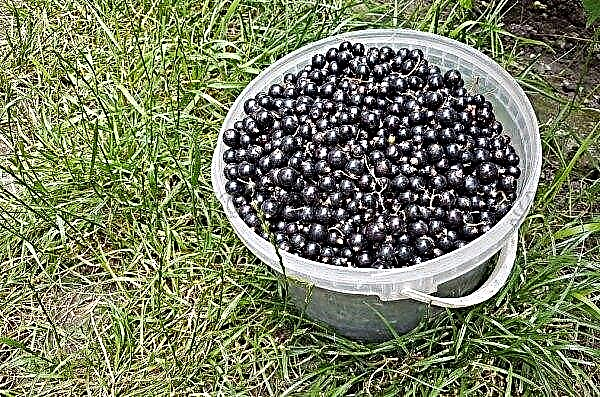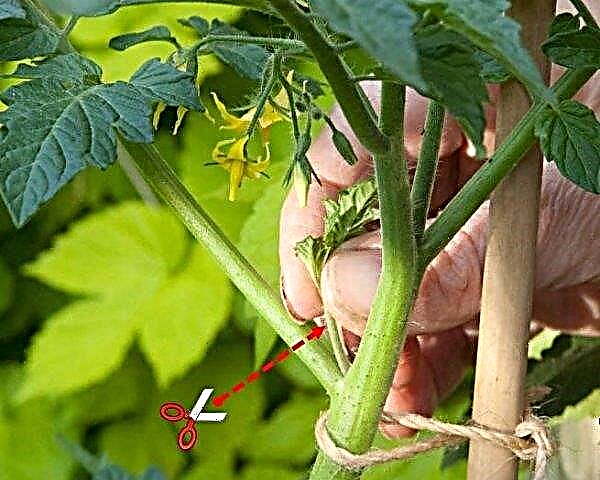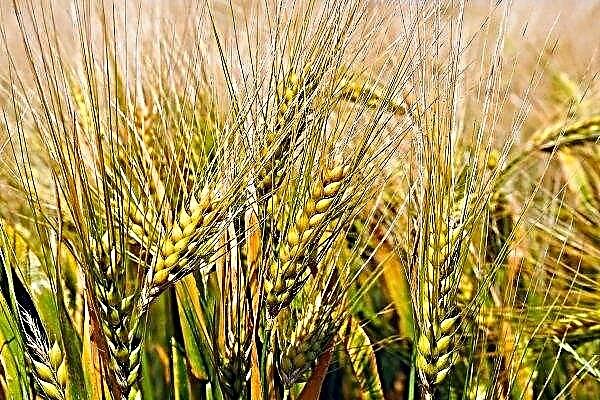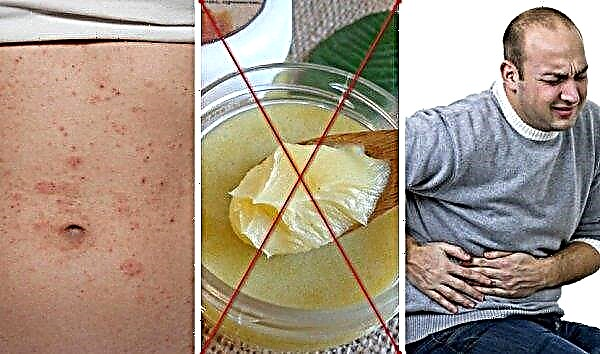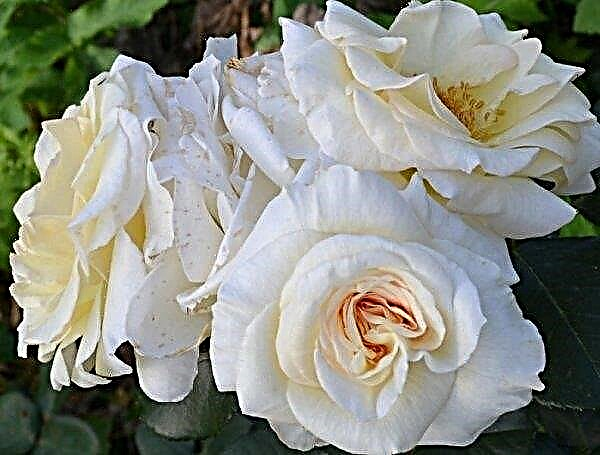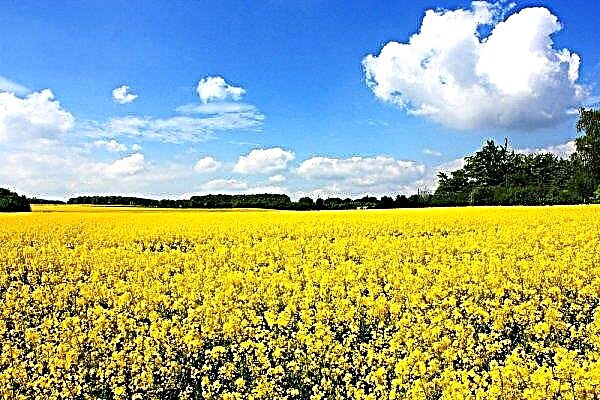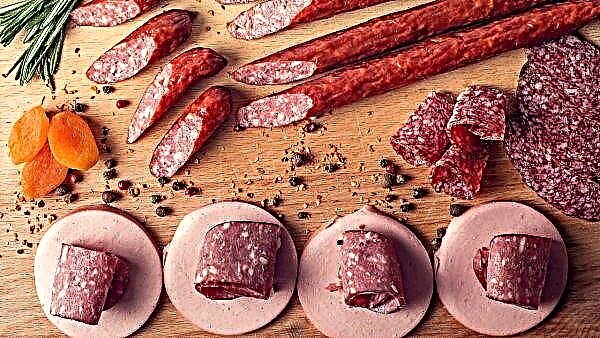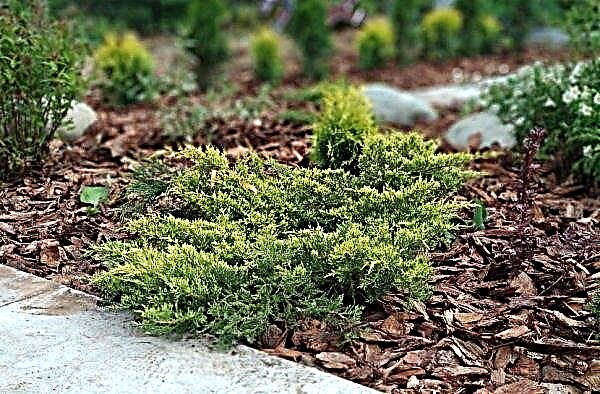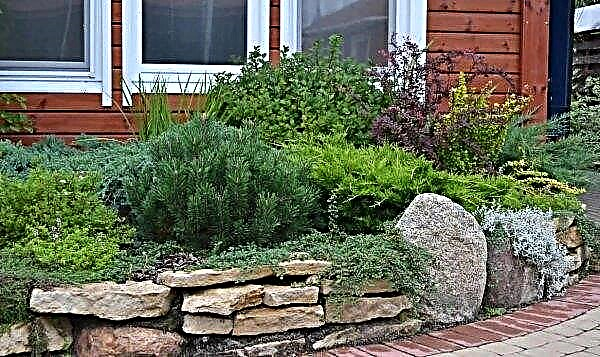Indoor plants are present in almost every living room, participating in the formation of home comfort. And if they also bring gastronomic benefits, then interest in them becomes not only aesthetic. On the windowsills, you can often find various varieties of indoor or garden pepper adapted to home conditions. Read more about growing such a plant later in the article.
Is it possible to grow peppers at home on the windowsill?
It is not only possible, but also necessary, to grow pepper at home - this plant is a storehouse of useful substances that are so necessary in the winter-poor period of vitamins. And the beauty of a flowering bush leaves few indifferent. The plant in question is quite demanding on the sun's rays, which are so few in the cold season, so the pots need to be placed on the southern and southeastern window sills, slightly shading during the period of solar activity.
Important! All of these varieties are high-yielding, which is perfect for the cramped conditions of the apartment when grown in pots.
But such placement is not enough - to extend the daylight hours (it should be up to 12 hours), the bushes must be kept for several hours under artificial lighting. Another feature of home growing various types of peppers is their negative reaction to drafts and temperature changes - in an apartment, a plant hardened by garden life is domesticated and becomes a little moody.
Choosing the Right Pepper Varieties
The choice of variety is determined by two factors: bush height and productivity. The bush for the windowsill should be compact, stunted (up to 50 cm) and sufficiently productive due to limited space. Home plants recommend the following varieties.
Firstborn of Siberia:
- fruit ripening - 108–115 days;
- weight - 100 g;
- color is bright red;
- pulp - pronounced taste, aromatic;
- peel thickness - 7 mm.

Treasure Island:
- fruit ripening - up to 100 days;
- weight - up to 60 g;
- color - orange-red;
- pulp - juicy, aromatic;
- peel thickness - 7 mm.

Watercolor:
- fruit ripening - 110 days;
- weight - 30 g;
- color - light red, scarlet;
- pulp - thin, aromatic;
- peel thickness - 2.5 mm.

Dwarf:
- fruit ripening - 110 days;
- weight - 80–85 g;
- color is red;
- pulp - fleshy, juicy;
- peel thickness - 9 mm.

Swallow:
- fruit ripening - 130 days;
- weight - up to 85 g;
- color is red;
- pulp - juicy, aromatic;
- peel thickness - 5 mm.

Gift of Moldova:
- fruit ripening - 125–135 days;
- weight - up to 90 g;
- color is dark red;
- pulp - sweet, juicy, saturated;
- peel thickness - 6 mm.

Timing and optimal conditions for landing
When growing pepper on a windowsill, the timing of planting seeds does not matter much, since at home it is almost always possible to provide the necessary conditions.
To get the first fruits in a certain season, follow the following sowing schedule:
- in summer - late March - early April;
- in the fall - the end of June - the beginning of July;
- in winter - end of August - beginning of September;
- in spring - end of November - beginning of December.
Important! Using garden soil before mixing it must be treated with a hot solution of potassium permanganate.
Preparatory work
Before starting the cultivation of bell pepper in the room, it is necessary to prepare containers for seedlings and the soil mixture, as well as process the seeds. The correct execution of all these operations is the key to a future high yield.
Tank and soil preparation
One of the features of pepper is the sensitivity of its root system to transplantation into new soil. It is better to avoid such a procedure and plant seedlings in a permanent place by transshipment or by digging up peat briquettes with seedlings. Seedling briquette, as well as a paper cup, a wooden box or some kind of plastic container can serve as a container for seedlings.
Openings for drainage and air access must be provided in any of these containers. The container is washed and disinfected with a solution of potassium permanganate. Soil is purchased ready-made in a specialized store.
You can cook it yourself from the following components (the amount per 10 kg of soil is given):
- turf land - 6 kg;
- sand - 2 kg;
- humus - 2 kg;
- lime - 150 g;
- ash - 200 g.
Seed treatment
Before planting, seeds need to be helped to hatch, and also to treat them from possible pathogens of infections.
Did you know? Most of the vitamins contained in the vegetable in question are fat-soluble, therefore their dressing salads and other dishes with pepper and vegetable oil will help the body assimilate.
This is done in this way:
- the seeds are soaked for about 20 minutes in a weak solution of potassium permanganate;
- washed in fresh cool water;
- soaked for a day in growth biostimulants - 2 drops of Epina per 100 ml of water or 1 drop of Zircon per 30 ml of water;
- laid out in a layer of wet gauze and left for three days in a dark place at room temperature;
- gauze with seeds should be moistened with warm water, preventing it from drying out.

Sowing technology
Hatching seeds can already be planted in containers prepared for seedlings. Two seeds are planted nearby, the depth of the laying is about 1 cm. Watering is carried out, the container is covered with cling film and put away in a bright place with room temperature. Pepper seedlings need to wait a long time - up to two weeks.
When the first shoots appear, the film is pierced with a gypsy needle or knitting needle in 3-4 places. When 3-4 leaves are formed on the sprouts, the film is removed. Of the two plants that have sprouted nearby, a stronger one is used for further cultivation, and the other is rejected.
Further care
Strong seedlings are ready for planting in a permanent place. In spacious pots, the plant will begin intensive growth and will require appropriate attention and care. First, the container for transplantation is prepared. A drainage layer is laid at the bottom - it can be expanded clay, broken red brick or small pebbles. All of these fillers must be boiled in advance (if, depending on the material, the industrial manufacturer did not take care of this) and treated with a solution of potassium permanganate. After that, the tank is filled with prepared soil.
Pick
Sweet pepper does not take root manipulation well, so transplanting must be done very carefully.
The dive sequence is as follows:
- the soil in the pot is watered abundantly for a day, and before transplanting, a depression is made in the center;
- a couple of hours before a dive, the earth around the seedling is well moistened;
- the seedling gently rises with a lump of soil and shakes off;
- the root is shortened by manicure scissors or nails by a third of the length;
- the sprout is placed in a new pot so that its root does not bend, and the leaves are at a distance of about 2 cm from the ground;
- the earth is compacted with a palm or soft spatula and watered with warm water.
Important! Before picking, it is worth tempering the seedlings, exposing it to fresh air, if weather conditions and air temperature allow this to be done.
Watering and fertilizing
There is no definite scheme for watering young bushes - everything is done as necessary. When the top layer of soil dries, the moisture content of the earth under it is checked and a decision is made on the need for watering. Water should be either room temperature or a little warmer, and watering is done under the root. It is necessary to spoil the plant by spraying, which is carried out daily or every other day. Fertilizers are applied only to the soil every two weeks immediately after watering. For top dressing, nitrogen mixtures are used for indoor flowers. Also, young plants respond well to replenishment with a solution of ash in water (6 tbsp.spoons per 3 l). Nutritious decoctions from field herbs are useful for pepper - it is suitable for it from nettle, clover, plantain. But potash fertilizers can not be used - the chlorine in their composition can harm.
Fertilizers are applied only to the soil every two weeks immediately after watering. For top dressing, nitrogen mixtures are used for indoor flowers. Also, young plants respond well to replenishment with a solution of ash in water (6 tbsp.spoons per 3 l). Nutritious decoctions from field herbs are useful for pepper - it is suitable for it from nettle, clover, plantain. But potash fertilizers can not be used - the chlorine in their composition can harm.
Shaping and pinching
Indoor species do not require special shaping, since compact varieties are selected for home cultivation. However, it is necessary to help the plant in preserving its strength - shoots on which fruiting has ended, as well as stems directed inside the bush, are removed. The same applies to buds tied in the branching of stems. So that the main stem does not break with the weight of the peppers, it must be tied to a trellis or wooden stick, which is carefully inserted into the ground next to the plant.
Pest and Disease Control
Susceptibility to diseases and parasites in peppers is low, but the possibility of their appearance still exists. The main diseases of indoor pepper - leaf spotting and blackening legs. They are treated quite simply - you need to normalize watering, excluding waterlogging, and make sure that the liquid does not stagnate in the soil and the pot. Spider mite or aphid able to penetrate the bush through an open window. A pest affected plant is washed with a soapy solution.
The time of emergence of seedlings and the first harvest
The first shoots appear within 1-2 weeks. It happens that pepper stays in the ground and does not want to emerge: most likely, it lacks lighting and heat. When correcting the situation, sprouts will appear soon. The first crop, depending on the precocity of the variety and the conditions for its cultivation, can be obtained already three months after planting the seeds. To obtain the fruits of medium maturity in biological ripeness, it will be necessary to wait about four months.
Did you know? The daily requirement of the human body for vitamin C can be replenished by consuming only half the fruit of pepper without seeds.
Sweet pepper on the windowsill is a vivid reminder of the summer at any time of the year. These plants will delight their owners with a good harvest for 4–5 years - for this you only need to take good care of the bushes.


